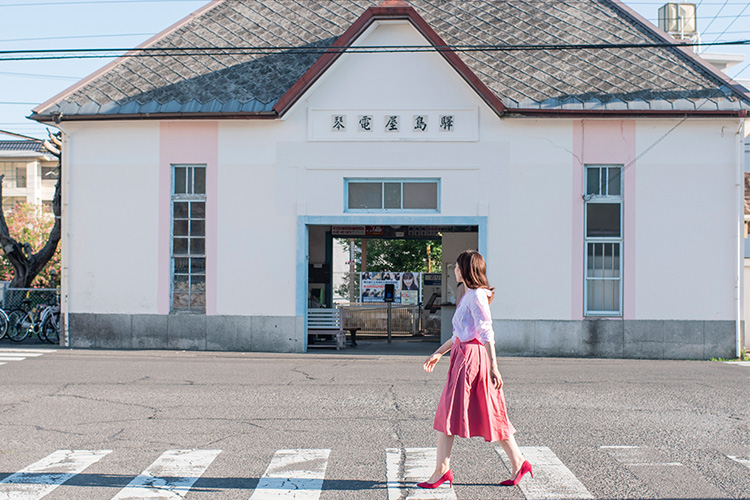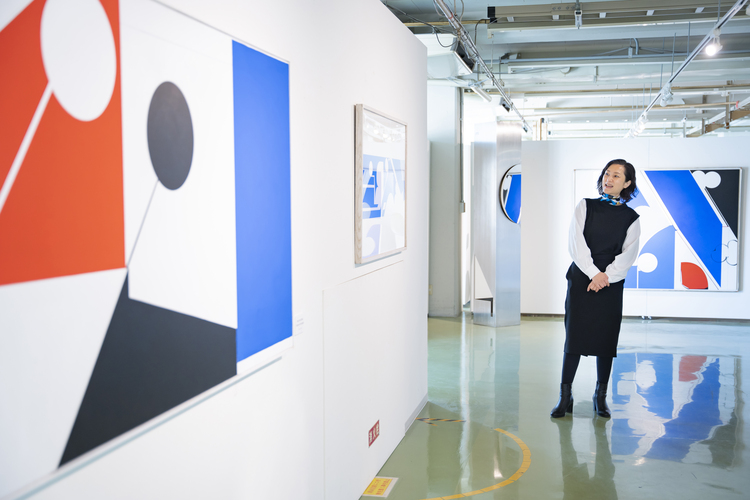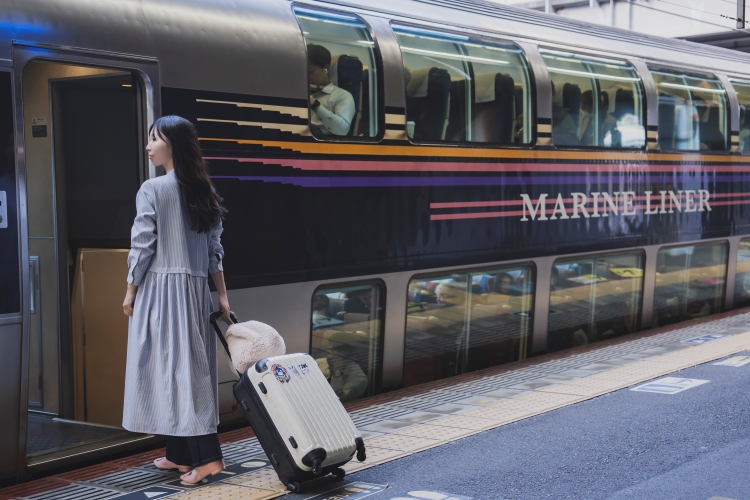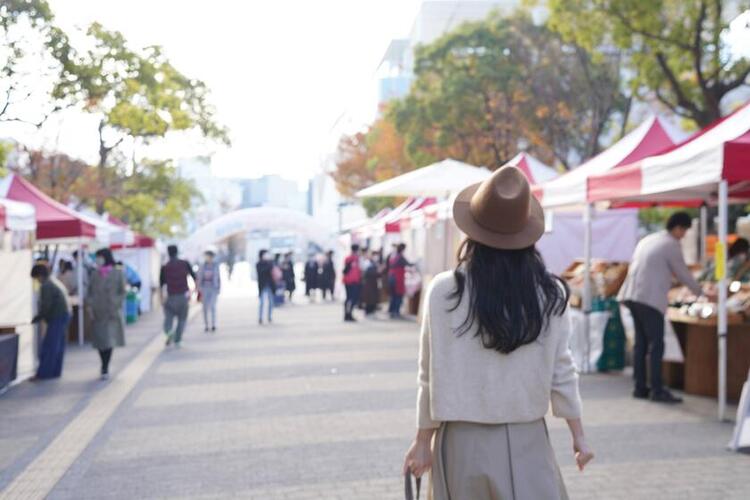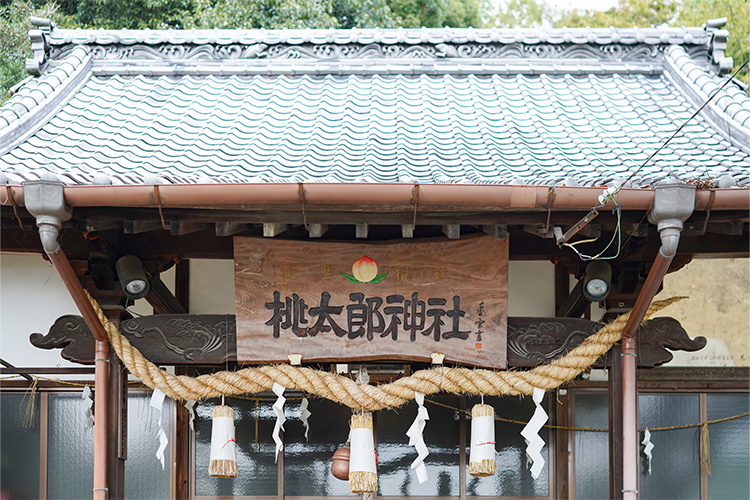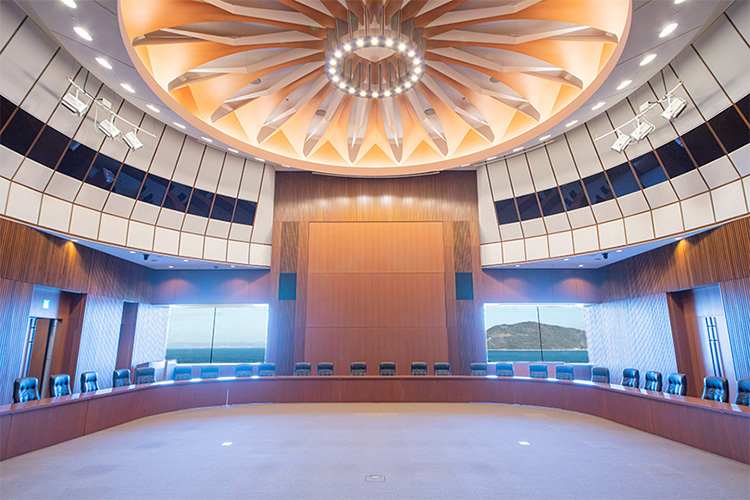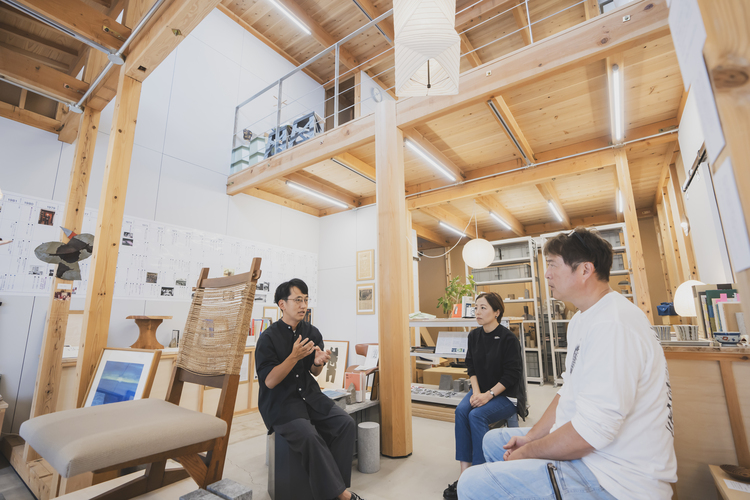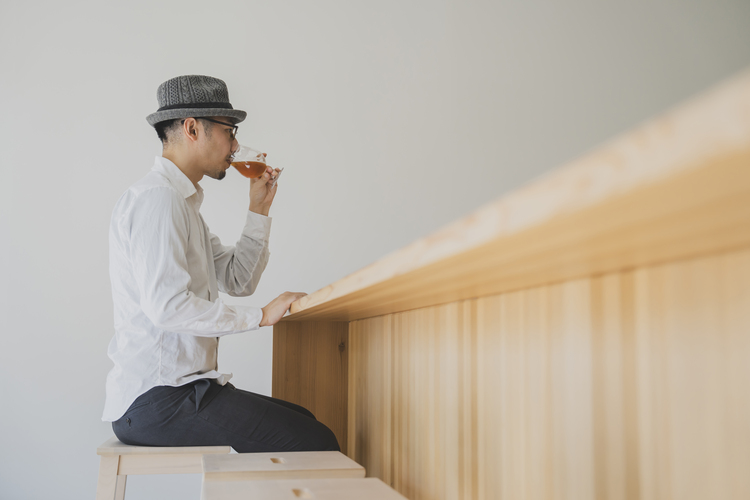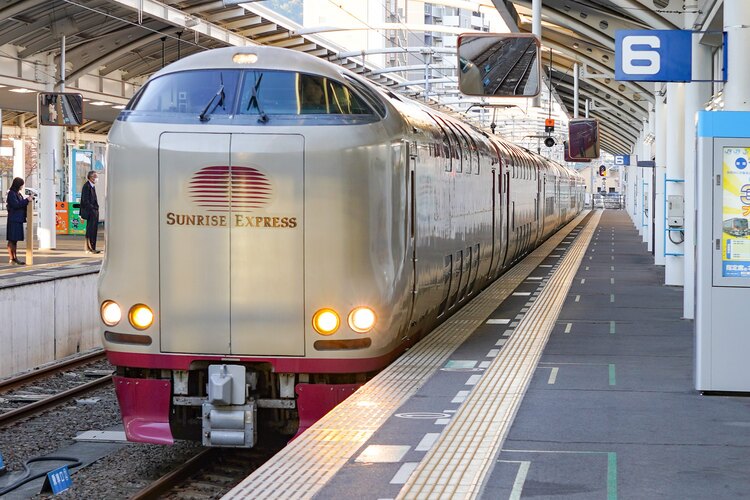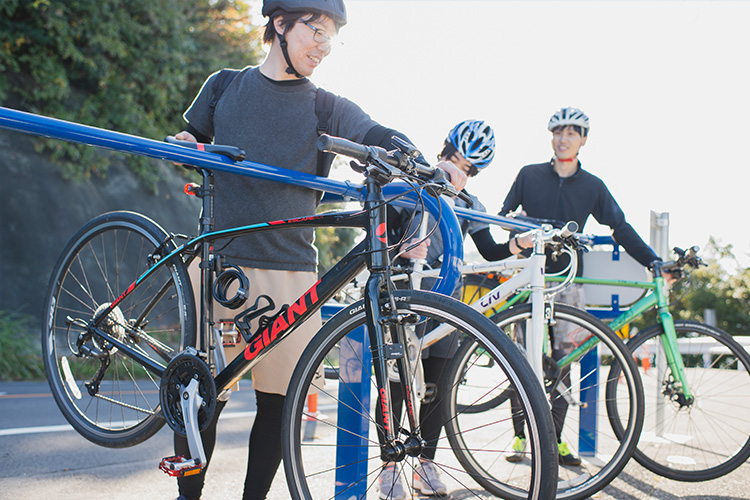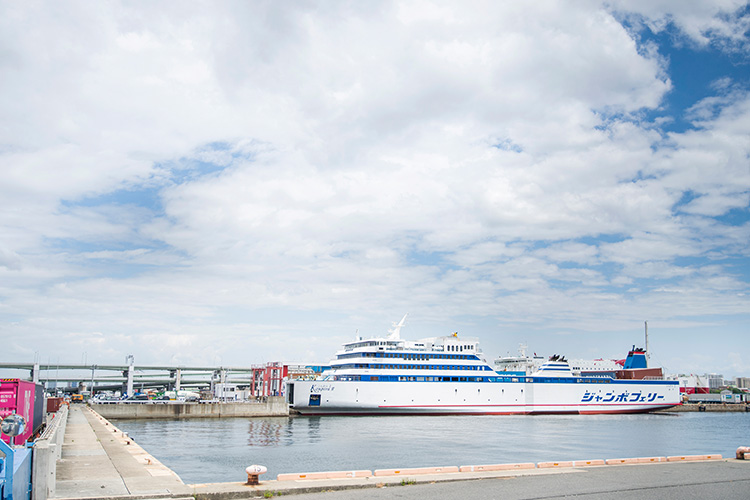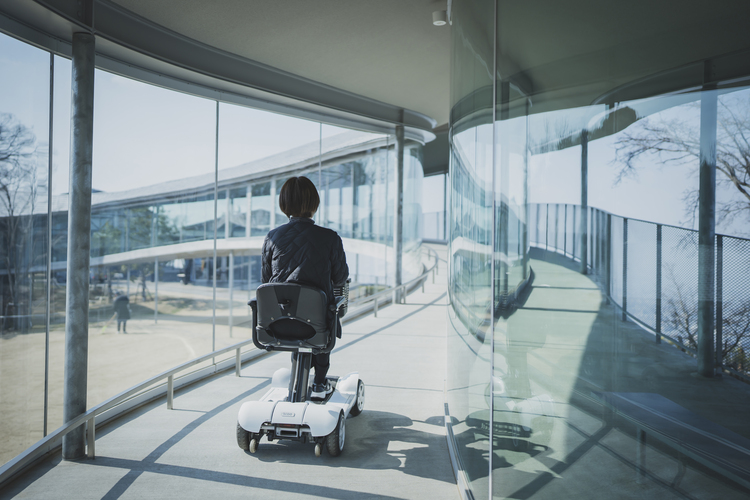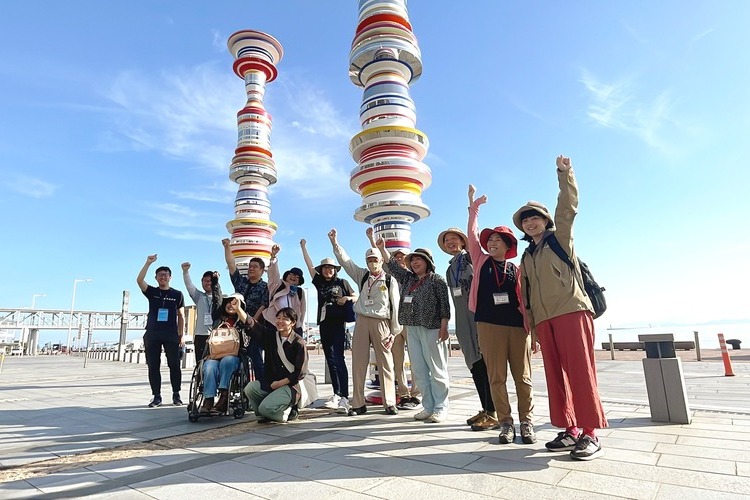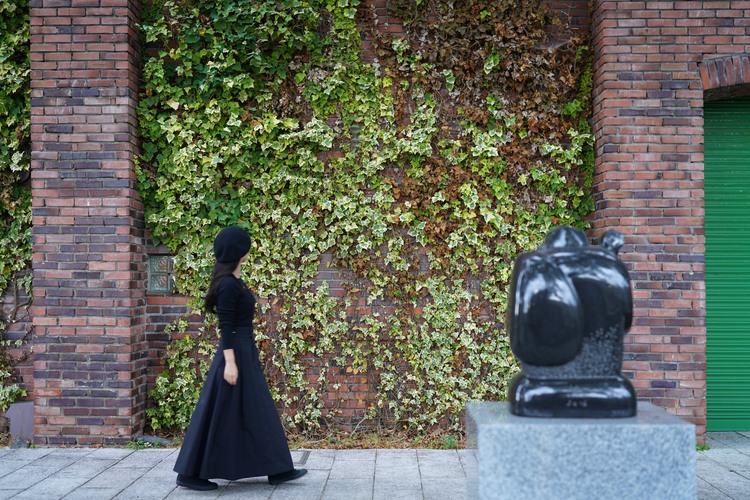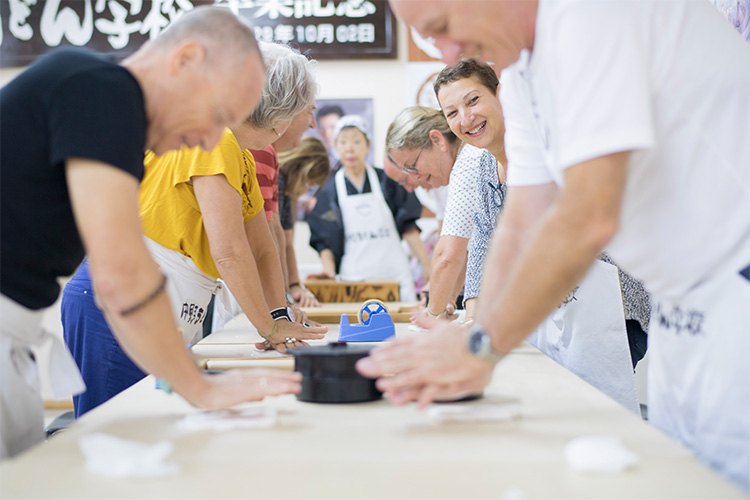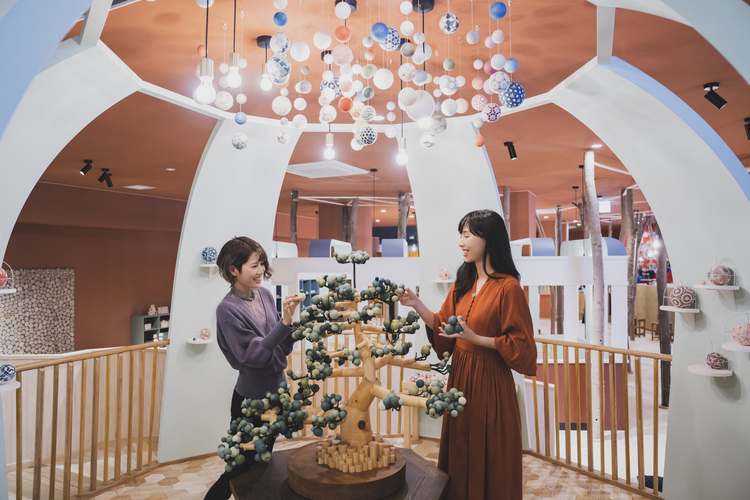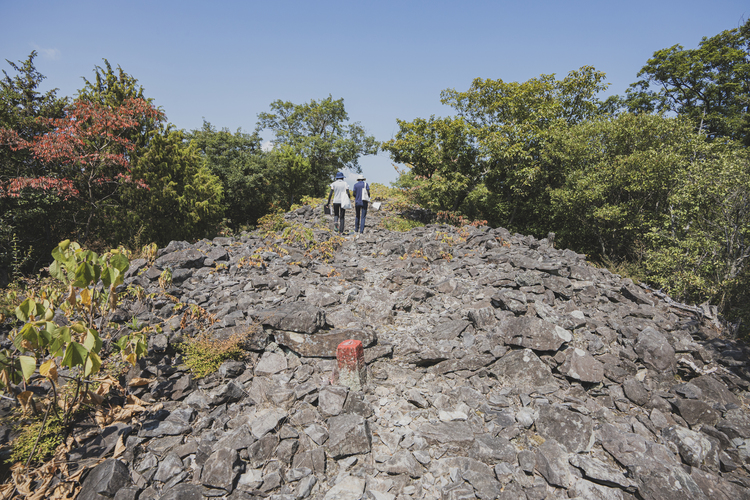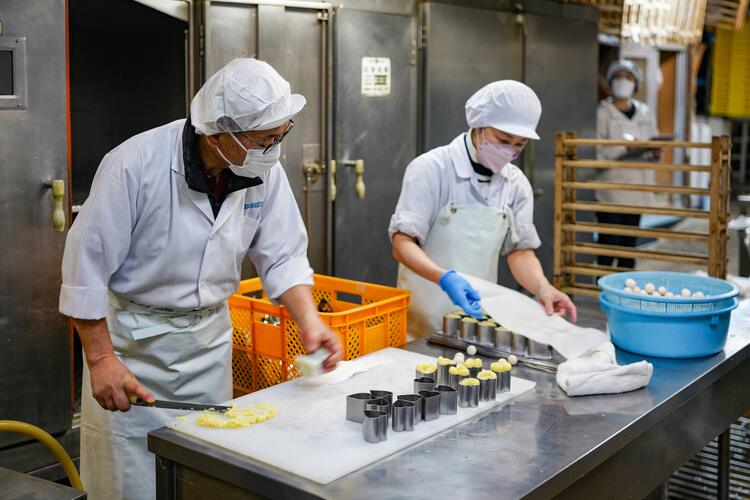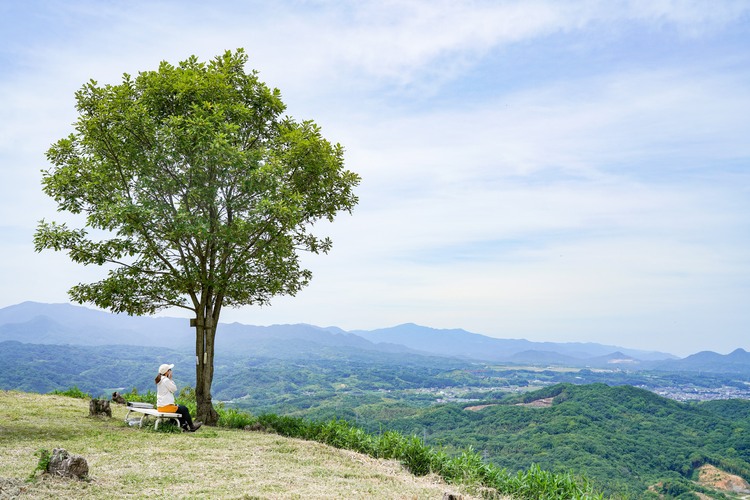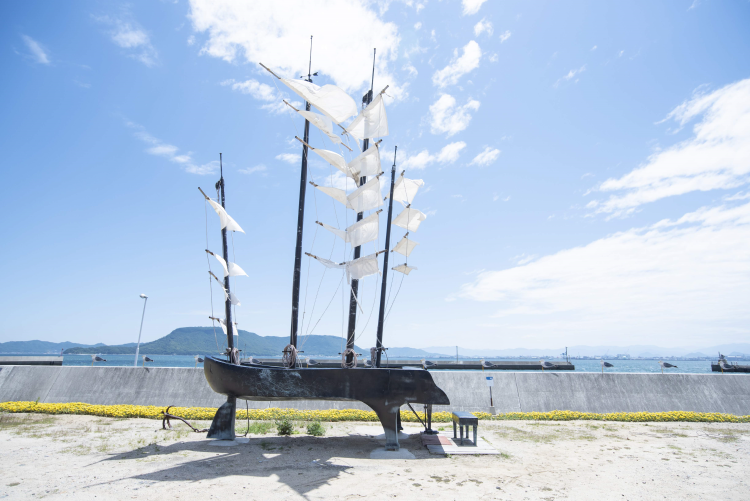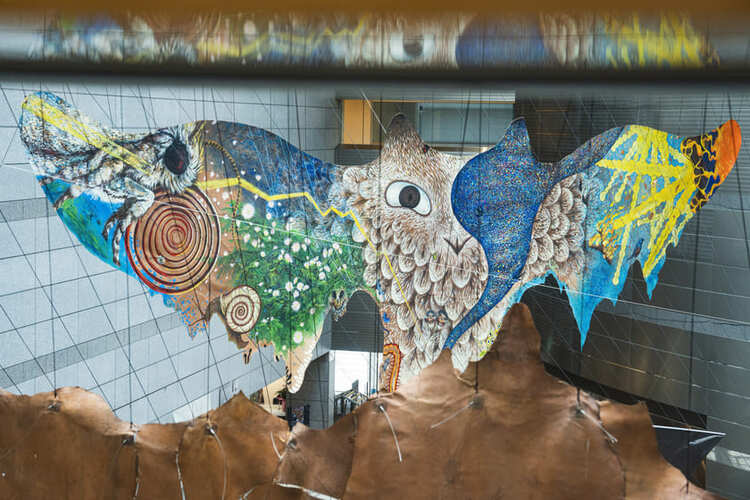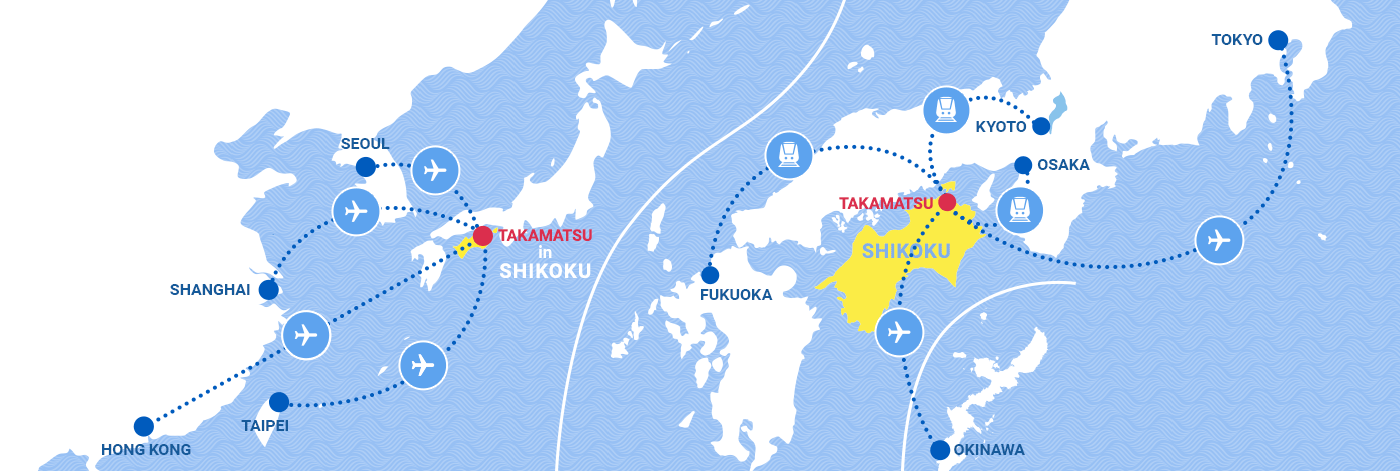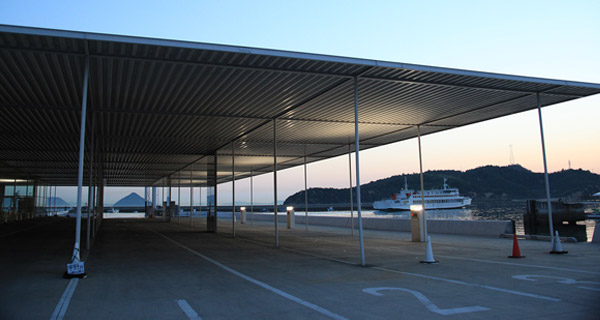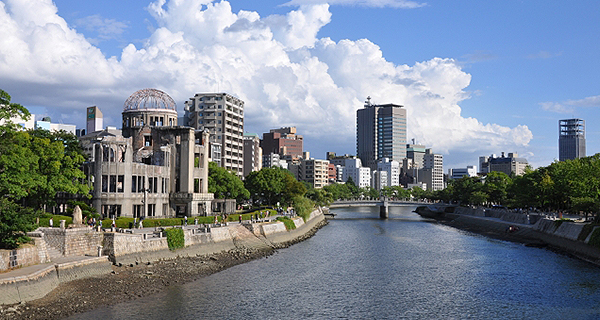
Art museums house and exhibit art works and people visit to see these treasures. Artist Tomoko Konoike continues to question the packaged relationship between art and audience with her own exhibitions.

"The Birth of Seeing Tomoko Konoike," Takamatsu Art Museum and Oshima, was held at The Setouchi Triennale 2022 (July 16 to September 4, 2022), connecting art with audience and attempting to change this relationship from its foundations.
"The Birth of Seeing" Tomoko Konoike at the Takamatsu Art Museum
"The Birth of Seeing" is not only with the eyes, but also seeing with the hands, nose, ears, and gravity and breath. New pathways between the rigid architecture of the museum and the natural world are opened by expanding sight to various parts of the body.
Konoike says that she is searching for a hidden path connecting museums with nature when holding exhibitions. This path is something that acts like glue between the art and the audience.
Let's explore the path opened up at the Takamatsu Art Museum.


The cord that begins from "Leather Black Kite" in the entrance hall encircles the entire venue as a guide for those with poor vision. There are small signs placed where there are obstacles and the material of the cord changes in places of transformation. The fact that people with poor vision can enjoy the artwork through touch is also a feature of "The Birth of Seeing".
"Animal Droppings Model," A Human-made Collection that Cycles Through Nature

On the second floor of the exhibit hall are works of art selected from the museum's collection by curators*1.

Quietly placed among the other artwork is "Animal Droppings Model," a new piece of art by Konoike.
Collections of art, carefully kept safe within storage rooms, are a testament to the fact that people from around the world have created and left behind many things. At the same time, there is "Animal Droppings Model," which cycles through nature as mushroom fungus or as nourishment for the mountain.

Konoike laughs joyfully imagining someone asking why it was placed here, and responding with, "I wonder why?"

For those who see it, "Animal Droppings Model" stirs up the feeling that this work of art is weird.
Konoike says that "if it was ten years ago, it would be an extreme expression or one that could be viewed as anti-establishment, but nowadays, people have come to read into it differently. People may see it in a completely different way that I thought. I hope people can feel something while enjoying the art, even if they misunderstand it."
"Animal Droppings Model" guides the audience to a path that opens up the imagination.
"intertidal zone," Connecting Oshima from the Takamatsu Art Museum
There is another path in "The Birth of Seeing."
There is another path in "The Birth of Seeing" on the first floor, titled "intertidal zone." There, the works of a variety of people who participated as part of Tomoko Konoike's exhibition were huddled together like waves, radiating dynamic energy.

The paintings, freely expressing a variety of styles, are not what you would describe as "artist paintings."
They are works from the Kinyokai art club at Kikuchi Keifuen, a national sanatorium for leprosy.
Konoike recalls how she felt when she encountered these paintings. "I was drawn in more and more by how interesting they were, which went beyond my own imagination."

This exhibition came about through Konoike's encounter with curator Emi Zoza.
The Kinyokai art club was started by a nurse in 1953. Without a teacher to guide them, club members created paintings on their own. At its busiest, there were 30 members creating art, but the number of members gradually dwindled and now there are only two. After members died, paintings not taken by the family were incinerated.
Zoza, who was the curator of the Contemporary Art Museum Kumamoto, resigned to devote her time to preserving these paintings, and she has held exhibitions of Kinyokai paintings all over Japan.

While some of the Kinyokai paintings are meticulously painted, others are inexperienced and awkward. But Konoike feels that the process of painting also leads to "The Birth of Seeing," similar to the sensation of learning a language.
She hopes that people will enjoy the paintings, simply liking them or thinking they are interesting, regardless of the fact that they were painted by people with leprosy.
The paintings, kept within the formal walls of a museum, wait for their audience with a slight look of tension.
She hopes that people will enjoy the paintings, simply liking them or thinking they are interest
"I thought it was strange to have road shows where you place the same items over and over and then it's finished. I thought that because I live and change, it might be good if my art did the same."
With these thoughts in mind, Konoike made detours between exhibitions across Japan and spoke with people there and surrounded herself with local foods. She became aware that her work with art was found in the checkpoints of her life.

One day, when looking at food lined up on a table, she unexpectedly had the idea that the venue for her exhibition was not one with walls but on a table. This was the moment that she "translated" the story from her life into the artistic presentation that is "The Storytelling Table Runner project."


Based on conversations she had with people she encountered while traveling, Konoike made sketches and the people she had spoken with turned these sketches into table runners.
The conversations that became subjects for the project are not occasions that might appear in a newspaper or town events, but memorable stories that have never been told to anyone.
In contrast to the soft texture and warmth of the materials, you feel a sense of the melancholy and irrationality of life in these works of art.



The "intertidal zone" connects the Takamatsu Art Museum with Oshima separated by the ocean.
Let's visit Oshima, the venue for The Setouchi Triennale 2022 via the path opened by the "intertidal zone".
【Setouchi Triennale 2022】To Oshima by Boat from the Port of Takamatsu
Floating in the Seto Inland Sea, Oshima is an island located about 8 km to the east of the Port of Takamatsu. The entire island makes up the National Sanatorium Oshima Seishoen.


A New Path Appears in Ringwanderung
Konoike visited Oshima for the first time in 2018 after a request to exhibit her works at The Setouchi Triennale 2019.
She talks of the moment she arrived on the island, saying, "even though it should've been a peaceful island, I remember feeling suffocated by the neatly controlled and protected space."



On the northern mountain she headed towards in trying to escape the suffocation, she found a path with a great ambience only wide enough for two people to pass, and it was here that she finally was able to breathe in her own way.
What she had found was a 1.5 km-long walking path dug out by young patients in 1933.









"Leather Black Kite," displayed in Ringwanderung in 2019
With a chainsaw, Konoike cleared the path, which had become overgrown as no one had visited in decades, and created "Ringwanderung"*2, a work for The Setouchi Triennale 2019.

"Ringwanderung offers a sense of security, one that would allow me to return to the safe, managed sanatorium. But I wanted to escape from there at some point."
After the event in 2019, Konoike researched the Oshima coast, searching for new ways to escape to the sea.







The previously closed ring of Ringwanderung was opened for The Setouchi Triennale in 2022, and "an Escape Route" for survival appeared.

The Birth of Seeing: "Model for the Green Constellation of the Unicorn" (entrusted to The Museum of Modern Art, Kamakura & Hayama)
This "an Escape Route" also leads to "Model for the Green Constellation of the Unicorn" (entrusted to The Museum of Modern Art, Kamakura & Hayama) by Isamu Wakabayashi, which was on exhibit in the "intertidal zone" of Tomoko Konoike's "The Birth of Seeing."
cafe SHIYORU's "The Storytelling Table Runner project" and Kinyokai Paintings
{Tsunagari no Ie} cafe SHIYORU opened in 2019 as part of the Art for the Hospital Project. Konoike's "The Storytelling Table Runner project" and Kinyokai paintings were added in 2022.










"The Storytelling Table Runner project" on display at cafe SHIYORU is based on episodes Konoike heard about from people admitted to Kikuchi Keifuen and the National Sanatorium Oshima Seishoen when she visited.
"The Storytelling Table Runner project" and Kinyokai paintings form the "intertidal zone," and the works of art from the Takamatsu Art Museum transport you to the Oshima seaside.
The Audience Itself Connects the Paths
Konoike says that "humans have many more ways to expand their imagination."
We can create paths and build relationships with others who are completely different from ourselves. Konoike says that her role is to create signposts for these paths.

"If you sense an obstacle in creating paths with others, perhaps you should speak to someone or something other than a person, for example a mountain or an animal."
Connecting paths through her work, Konoike's travels will continue.

*1 Selected by three people: the curator at the Takamatsu Art Museum, and the curators at the Shizuoka Prefectural Museum of Art and the Aomori Museum of Art who traveled later
*2 Ringwanderung (a German word) refers to the act of wandering around and around as if drawing a concentric circle unconsciously after losing one's sense of direction from mist, a snowstorm, etc.
Takamatsu Art Museum The Birth of Seeing Tomoko Konoike
- Date and time
- Dates:July 16(Sat.)-September 4(Sun.),2022
- Business hours
- 9:30-17:00 (Entry until 16:30) Friday and Saturday:9:30-19:00 (Entry until 18:30)
- Regular holidays
- Mondays, but open on Monday, July 18 (a public holiday), and Monday, August 15, and closed on Tuesday, July 19
- URL
- https://www.city.takamatsu.kagawa.jp/museum/takamatsu/event/exhibitions/exhibition_2022/exhibitions_2022/ex_20220716.html
- Supported languages
- 日本語
Setouchi Triennale 2022 Oshima
- Date and time
- Dates:Summer: Monday, August 15 to Sunday, September 4, 2022; Autumn: Thursday, September 29 to Sunday, November 6, 2022
Venue:Oshima https://setouchi-artfest.jp/en/place/oshima
Artwork No. os11 Ringwanderung
https://setouchi-artfest.jp/en/artworks/detail/b5bfef35-ce00-417e-864f-2a9d987a4483
Artwork No. os08 The Storytelling Table Runner project in National Sanatorium Oshima Seishoen
https://setouchi-artfest.jp/en/artworks/detail/3e95aff6-e823-4186-8f1e-6ed70d8c0604
Artwork No. os12 The golden pig that tells a story(Kinyokai paintings)
https://setouchi-artfest.jp/en/artworks-artists/artworks/oshima/403.html
Gathering date:2022.9.1 / Takamatsu Art Museum The Birth of Seeing Tomoko Konoike





